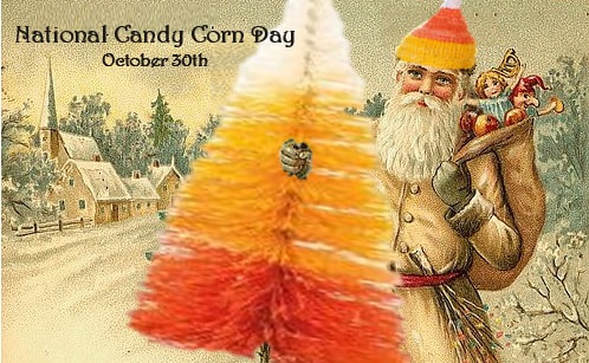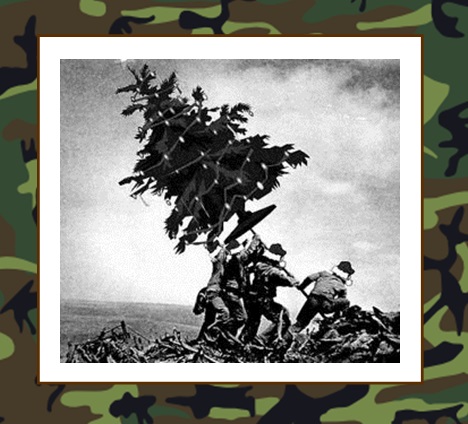The War on Christmas is a myth. Nothing could be further from the truth. As a matter of fact, the War on Christmas is actually a yuletide ruse meant to inflate an already bloated level of a rising Christmas tide. The entire hoax is nothing more than an extravagant campaign in an actual war – the War on National Candy Corn Day.
National Candy Corn Day is celebrated on October 30th, a date set by Emmett Lee Dickinson, Emily Dickinson’s third cousin, twice removed (at her request) and the inventor of candy corn. However, as the popularity of the holiday grew and grew, retailers and commercial purveyors of Christmas cheer grew more and more worried. In the 1950s the NRA (National Retailers Association) plotted an elaborate and insidious War on National Candy Corn Day, and a major part of their sinister scheme was to fabricate a “War on Christmas” – and through this ho-ho-hoax, the NRA and big box department stores could introduce Christmas displays, parades and sales earlier and earlier each year.
We are just half-way through September. Have you seen a Christmas display already? I have. As a matter of fact, I have seen multiple Christmas displays.
Have you seen a National Candy Corn Day display? I haven’t. Not. A. Single. One.
By the late 1800s, Emmett Lee Dickinson saw the War on National Candy Corn coming (he was quite a visionary), and he was incensed. He documented his ire and indignation in his poem “There’s the War on Candy Corn” (below on the left). His poem inspired third cousin Emily to pen her poem “There's the Battle of Burgoyne” (below on the right).
| By Emmett Lee Dickinson: There’s the War on Candy Corn – Battled, every Year, It’s a Time of Man and Treat Christmas isn’t near “Christmas” sounds majestic – So that solemn War Hard to comprehend it Hastened in the store – | By Emily Dickinson: There's the Battle of Burgoyne – Over, every Day, By the Time that Man and Beast Put their work away "Sunset" sounds majestic – But that solemn War Could you comprehend it You would chastened stare – |
Below: A NCCD holiday card from 1947 depicting Cornucopia Chris who would bring toys and candy corn to children.
During the late 1940s and early 1950s, the NRA (National Retailers Association) began to worry of the immense popularity of National Candy Corn Day. Families were decorating their houses, putting up candy corn trees, sending National Candy Corn Day cards and more -- and it was all having an adverse impact on Christmas. The NRA devised the mythical "War on Christmas" as a way to combat National Candy Corn Day. In effect, their conspiracy was, in effect, a War on National Candy Corn Day.
Below: Candy corn trees that used to adorn every house in America for National Candy Corn Day.






 RSS Feed
RSS Feed
